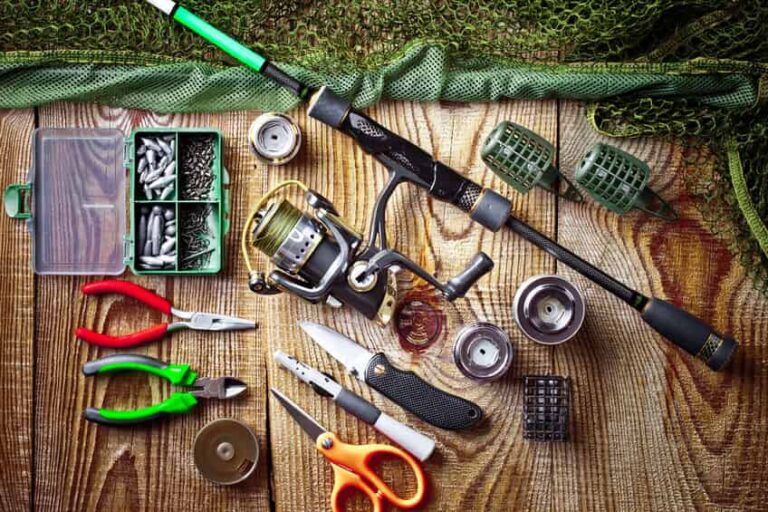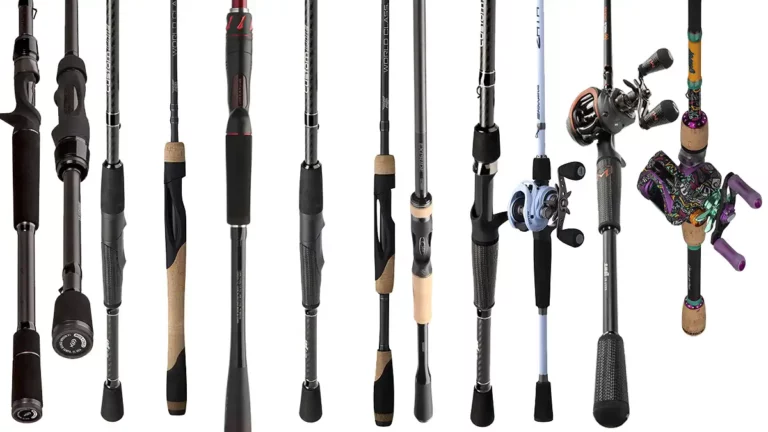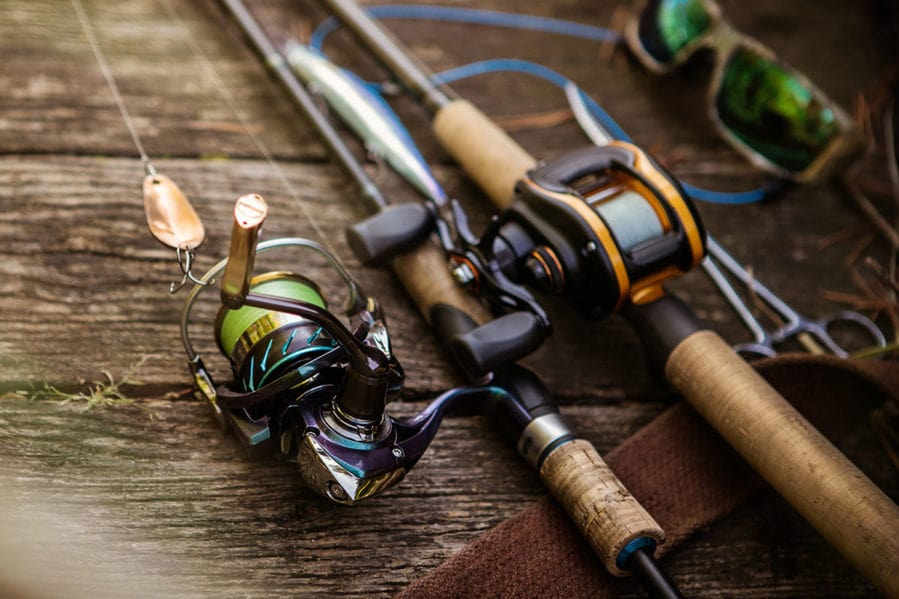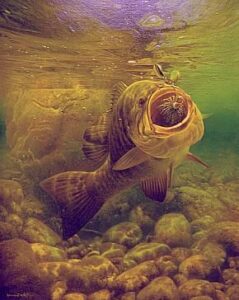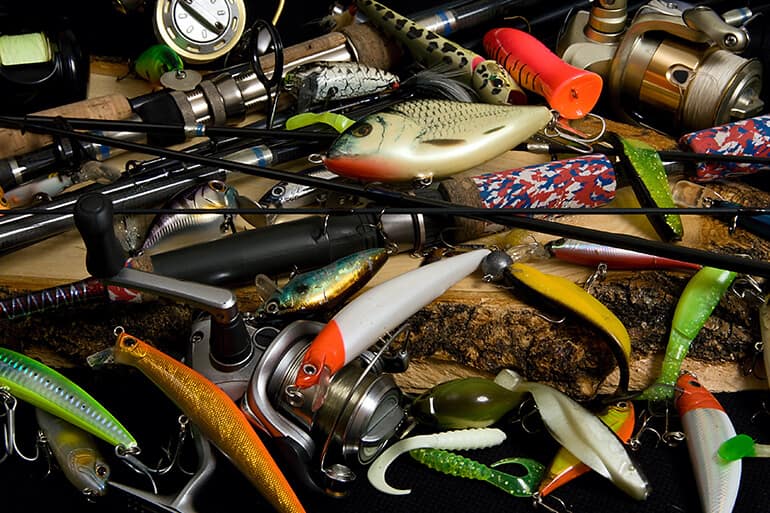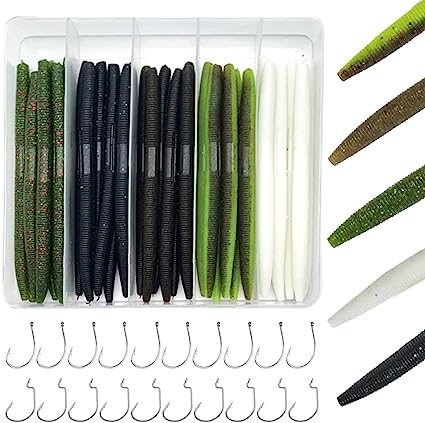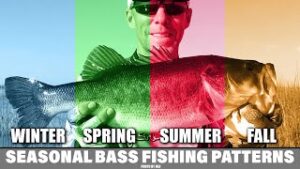Fishing for Dummies: Everything You Need to Know When Getting Started
Fishing is an incredible way to have a lots of fun and connect with nature.
Yes, it can be tricky and frustrating at times, but exploring the world of fishing is certainly worth it.
Since you are reading this, I am assuming that you are a beginner.
So I will make this article very easy to follow while still giving you all of the basics you need.
Different Types of Fishing
Fishing offers a vast array of experiences, each tailored to the unique characteristics of various water bodies and fish species.
Whether you prefer the calm serenity of freshwater lakes or the thrill of the open sea, there’s a type of fishing that suits your preferences.
Here are some of the most popular types of fishing you can explore:
- Freshwater Fishing:
- Shore Fishing: Angling from the banks of rivers, lakes, or ponds.
- Lake Fishing: Targeting fish species residing in larger bodies of freshwater.
- River Fishing: Fishing in flowing rivers, where fish congregate in certain areas.
- Pond Fishing: Fishing in smaller, contained bodies of water like ponds or reservoirs.
- Ice Fishing: A unique experience of fishing through holes in frozen lakes or rivers during winter.
- Saltwater Fishing:
- Surf Fishing: Casting your line from the shoreline of oceans or seas.
- Deep-Sea Fishing: Venturing far offshore to catch larger game fish like tuna or marlin.
- Inshore Fishing: Staying closer to the coastline, targeting fish in bays and estuaries.
- Flats Fishing: Wading in shallow, sandy areas to catch species like bonefish and redfish.
- Fly Fishing:
- A specialized technique using lightweight artificial flies to mimic insects on the water’s surface.
- Typically practiced in freshwater for species like trout and salmon, but can be adapted to saltwater environments.
- Ice Fishing:
- Practiced on frozen lakes or ponds during the winter months.
- Involves drilling holes in the ice and dropping lines to catch fish like perch, walleye, and pike.
- Sport Fishing:
- Focuses on catching larger, prized fish for recreation and sport.
- Often involves catch-and-release practices to conserve fish populations.
Each type of fishing offers a unique set of challenges and rewards. Whether you’re a beginner or an experienced angler, exploring different fishing styles can broaden your skills and open up new adventures in the world of fishing.
Fishing Equipment
In the world of fishing, having the right equipment can make all the difference between a frustrating day on the water and a successful fishing expedition.
In this section, we’ll explore the essential fishing gear you’ll need to gear up for your angling adventures and increase your chances of landing that prized catch.
Fishing Rods
When it comes to fishing rods, they are far from being one-size-fits-all.
To maximize your fishing experience, it’s crucial to understand the key elements that make up a fishing rod, including its length, action, and power.
In this section, we’ll delve into each aspect, unraveling the mystery behind fishing rod specifications, and help you choose the perfect rod for your angling pursuits.
1. Length:
The length of a fishing rod plays a significant role in determining its casting distance, leverage, and overall performance.
Fishing rods come in various lengths, typically ranging from 4 to 14 feet, with each length designed for specific fishing techniques and environments.
- Short Rods (4 to 6 feet): Ideal for situations where casting distance is limited, such as fishing in tight spaces or when targeting small fish species.
- Medium-Length Rods (6 to 7.5 feet): Versatile and commonly used for various fishing styles, these rods offer a good balance of casting distance and control.
- Long Rods (7.5 to 14 feet): Excellent for surf fishing and situations where extended casting distance is required to reach fish further from the shore.
2. Action:
The action of a fishing rod refers to how much it bends or flexes when pressure is applied to the tip. There are three primary action types: fast, medium, and slow.
- Fast Action: Bends primarily in the upper third or quarter of the rod. Best suited for techniques requiring quick and precise hooksets, like jigging or topwater fishing.
- Medium Action: Bends throughout the upper half of the rod. Versatile and suitable for a wide range of fishing styles, providing a good balance between sensitivity and power.
- Slow Action: Bends along the entire length of the rod, even into the handle. Ideal for fishing with live bait or when a softer presentation is required to avoid spooking fish.
3. Power:
Fishing rod power, also known as “rod weight” or “rod strength,” refers to its ability to handle different line strengths and lure weights.
Rod power is usually categorized into four main classes: ultralight, light, medium, and heavy.
- Ultralight: Designed for delicate presentations and ultra-thin lines, best suited for small fish and finesse techniques.
- Light: Suitable for lighter lines and smaller lures, commonly used for panfish and trout fishing.
- Medium: A versatile power level capable of handling moderate-sized fish and a wide range of fishing applications.
- Heavy: Reserved for heavy lines and large lures, intended for catching big game fish like bass, pike, or catfish.
Fishing Reels
Fishing reels are an essential component of your angling gear, allowing you to control the line’s release and retrieve during your fishing endeavors.
Among the various types of fishing reels available, spinning and baitcasting reels are two of the most popular choices.
In this section, we’ll dive into the features and advantages of each reel type, helping you make an informed decision on which one best suits your fishing needs.
1. Spinning Reels:
Spinning reels, also known as open-faced reels, are widely favored by beginners and experienced anglers alike for their ease of use and versatility.
They are mounted on the underside of the fishing rod and are characterized by their fixed, open spool design.
Features:
- User-Friendly: Spinning reels are beginner-friendly, making them an excellent choice for those new to fishing.
- Easy Casting: The open spool design and a fixed-line guide make casting smoother and less prone to backlash.
- Versatility: Suitable for a wide range of fishing techniques and applications, from freshwater to light saltwater fishing.
- Great for Light Lines: Ideal for using light lines and smaller lures, perfect for finesse fishing.
2. Baitcasting Reels:
Baitcasting reels, also called baitcasters, are popular among experienced anglers seeking greater control and precision.
They are mounted on top of the fishing rod and come with a revolving spool, offering more control over line release.
Features:
- Precision and Control: Baitcasting reels provide superior casting accuracy and control, making them ideal for specific fishing techniques that require precise lure placement.
- Handling Heavier Lures: They are designed to handle heavier lures and lines, making them suitable for targeting larger and more aggressive fish species.
- Adjustability: Baitcasters have adjustable brake systems and spool tension, allowing anglers to fine-tune the reel to their preferences and fishing conditions.
Choosing the Right Reel:
The choice between spinning and baitcasting reels ultimately depends on your skill level, fishing style, and the type of fish you’re targeting.
Beginners or those seeking a hassle-free fishing experience may find spinning reels more comfortable to use, while seasoned anglers looking for greater casting control and versatility might opt for baitcasting reels.
Fishing Line
There are three types of fishing lines available, each with its unique characteristics and applications.
In this section, we’ll explore the most common types of fishing lines to help you make an informed decision for your next fishing trip.
1. Monofilament Fishing Line:
Monofilament, often referred to as “mono,” is a popular and versatile fishing line choice.
It’s made from a single strand of nylon or similar materials, offering a good balance of strength, flexibility, and affordability.
Features:
- Stretch: Monofilament lines have a degree of stretch, which can help absorb sudden shocks from aggressive fish and reduce the risk of line breakage.
- Easy Knot Tying: The smooth texture of monofilament makes it easy to tie knots, making it beginner-friendly.
- Buoyancy: Monofilament lines float on the water’s surface, making them suitable for topwater fishing and certain lures.
2. Fluorocarbon Fishing Line:
Fluorocarbon lines are known for their near-invisibility underwater and excellent abrasion resistance.
They are made from a special fluoropolymer material, offering some unique advantages for specific fishing scenarios.
Features:
- Low Visibility: Fluorocarbon lines are nearly invisible underwater, making them ideal for finicky and cautious fish.
- Sinks Faster: Unlike monofilament, fluorocarbon has higher density, causing it to sink faster, which is beneficial for certain fishing techniques.
- Abrasion Resistance: The fluorocarbon material is highly resistant to abrasion, making it suitable for fishing in areas with rough structures.
3. Braided Fishing Line:
Braided lines, commonly referred to as “braid,” are constructed by weaving together multiple strands of synthetic fibers like Spectra or Dyneema.
They offer exceptional strength and sensitivity, making them a top choice for certain fishing applications.
Features:
- High Strength: Braided lines have incredible tensile strength, making them suitable for targeting large and powerful fish species.
- Low Stretch: Braid lines have minimal stretch, providing excellent sensitivity and immediate hook-setting power.
- Thin Diameter: Braid lines have a smaller diameter compared to monofilament and fluorocarbon lines of the same strength, allowing for longer casts and increased line capacity on reels.
Other Accessories
- Tackle Box: A storage solution for organizing hooks, lures, sinkers, and tackle items.
- Fishing Lures: Attract specific fish species with crankbaits, jigs, soft plastics, and spinners.
- Fishing Nets: Safely land your catch with a soft mesh net and handle.
- Fishing Pliers and Tools: Essential for handling hooks, cutting lines, and unhooking fish. Many of these come all together in a good fishing multi tool.
- Fishing Hat and Sunglasses: Protect from the sun and reduce glare on the water.
Common Fish Species Targeted
Freshwater fishing offers a diverse array of fish species, each presenting unique challenges and rewards for anglers.
Whether you’re fishing in a serene lake, river, or pond, understanding the characteristics of different freshwater fish can help you target and catch your desired species.
Here’s an overview of some of the most popular freshwater fish you may encounter:
Bass
- Largemouth Bass: Known for their aggressive strikes and thrilling fights, largemouth bass are one of the most sought-after freshwater game fish. They prefer slow-moving or still waters with plenty of cover like weeds, rocks, and fallen trees.
- Smallmouth Bass: Smaller but equally feisty, smallmouth bass are found in clearer and cooler waters, typically in rivers and lakes with rocky bottoms and moderate current.
Trout
- Rainbow Trout: Vibrantly colored with a pink stripe along their sides, rainbow trout thrive in cold, clear streams, rivers, and lakes. They are popular targets for both fly anglers and bait fishermen.
- Brown Trout: Known for their cunning and wily nature, brown trout inhabit cool, well-oxygenated waters with plenty of hiding spots and underwater structure.
Panfish
- Bluegill: A staple for many beginners, bluegills are small, colorful fish found in abundance in lakes and ponds. They eagerly bite on worms and small lures, making them ideal for introducing kids to fishing.
- Crappie: Popular for their delicious taste, crappies are often found in schools around submerged structures like brush piles and docks.
Catfish
- Channel Catfish: Widely distributed and prized for their firm, tasty flesh, channel catfish prefer slow-moving waters with mud or sandy bottoms. They are known to be opportunistic feeders, biting on a variety of baits.
- Flathead Catfish: Growing much larger than their channel catfish counterparts, flatheads are powerful predators that prefer deeper waters with plenty of cover.
Pike
Northern Pike: Fierce and aggressive, northern pike are ambush predators often found lurking near vegetation and structures in lakes and slow-moving rivers.
Walleye
Walleye: Known for their excellent taste and challenging behavior, walleye inhabit large lakes and reservoirs, primarily during low-light periods like dusk and dawn.
Knot Tying (Best Knots for Beginners)
Mastering a few essential fishing knots is vital for securing your hooks, lures, and other tackle to your fishing line with confidence.
As a beginner angler, learning these knots will help you avoid frustrating line breaks and lost fish.
Here are some must-know fishing knots to get you started:
1. Improved Clinch Knot:
- Use for tying hooks, swivels, and lures to the fishing line.
- Easy to learn and one of the most commonly used fishing knots.
- Provides a reliable and strong connection.
2. Palomar Knot:
- Suitable for securing larger hooks and lures to the line.
- Known for its strength and simplicity.
- Ideal for anglers who prefer a quick and efficient knot.
3. Uni Knot (Universal Knot):
- Versatile knot for tying hooks, lures, and swivels to the line.
- Works well with both monofilament and braided lines.
- Allows for easy adjustment of knot tension.
4. Loop Knot (Non-Slip Loop Knot):
- Creates a strong and secure loop at the end of the line for attaching lures or flies.
- Ideal for enhancing the movement and action of certain lures.
- Great for applications where a free-swinging lure is desired.
5. Blood Knot:
- Used for joining two lines of similar diameter, such as leader material to the mainline.
- Commonly employed in fly fishing and making leaders for various fishing styles.
- Requires practice to master but provides a smooth and reliable connection.
6. Double Uni Knot:
- An excellent knot for joining two lines of different diameters or materials.
- Often used for attaching a fluorocarbon or monofilament leader to a braided mainline.
- Provides a strong and smooth connection between lines.
Tips for Learning Fishing Knots:
- Practice tying knots at home before your fishing trip to build confidence and muscle memory.
- Use thicker rope or lines to practice knots initially, then move on to lighter fishing lines as you become more proficient.
- Keep your knots snug and tight, but avoid over-tightening, as it may weaken the line.
Bait and Lure Selection
Welcome to the exciting world of bait and lure selection! In this section, we’ll dive into the art of enticing fish with the right bait and lures, giving you the knowledge and tips to choose the perfect temptations for your target species.
Live Bait
Live bait fishing is a tried-and-true technique that has been captivating anglers for generations.
Using live organisms as bait adds a natural and irresistible allure to entice various fish species.
In this section, we’ll explore the ins and outs of live bait fishing, from choosing the best live bait to rigging techniques that will increase your chances of landing a prized catch.
1. Choosing the Right Live Bait:
Selecting the right live bait depends on the fish species you want to target and the fishing environment. Some common live baits include:
- Worms: Earthworms and nightcrawlers are universal favorites that attract a wide range of freshwater fish like bass, trout, and panfish.
- Minnows: Small fish like shiners, fatheads, or chubs are excellent choices for enticing predatory species like bass, pike, and walleye.
- Crickets and Grasshoppers: Ideal for panfish and trout fishing, these insects are especially effective during the warmer months.
- Crawfish: A favorite of bass and catfish, crayfish can be found in rocky or muddy areas near the water.
2. Properly Handling Live Bait:
To keep your live bait healthy and lively, it’s essential to handle them with care.
Avoid leaving live bait in direct sunlight or extreme temperatures for an extended period.
Use a bait bucket or container with water to keep them fresh and active during your fishing trip.
3. Bait Presentation Techniques:
The way you present your live bait can significantly impact your success. Depending on your target species, you can use various rigging techniques:
- Hooking through the Lips: This method keeps the bait active and allows it to swim naturally in the water, attracting predatory fish.
- Hooking through the Back or Tail: For larger baitfish, this technique creates a wounded or struggling appearance, making them irresistible to hungry predators.
- Using Bobbers: Adding a bobber (float) above the bait allows you to suspend it at a specific depth, making it more visible to fish.
4. Patience and Observation:
Live bait fishing requires patience and observation. Watch for any signs of fish activity or changes in the water, such as ripples or disturbances. Patience is often rewarded with a bite from a curious or hungry fish.
5. Responsible Fishing:
When using live bait, it’s essential to follow local fishing regulations and practice ethical fishing.
Avoid using live bait from one water body in another to prevent the spread of invasive species.
Lures
Lure fishing is an exciting and dynamic approach to catching fish that relies on artificial baits designed to mimic the appearance and movements of prey.
Anglers use a wide variety of lures, each specifically crafted to entice different fish species.
In this section, we’ll explore the world of lure fishing and introduce you to some popular lure types to help you reel in your next catch.
1. Crankbaits:
Crankbaits are hard-bodied lures equipped with a diving lip that causes them to wobble and dive when retrieved.
They come in various sizes and colors, imitating different baitfish or crawfish species.
Crankbaits are effective for attracting bass, pike, and walleye, especially in shallower waters.
2. Spinnerbaits:
Spinnerbaits are versatile lures featuring one or more metal blades that spin when pulled through the water.
The spinning motion creates vibrations and flashes that catch the attention of predatory fish like bass and pike. They are ideal for fishing in weedy or murky waters.
3. Jigs:
Jigs consist of a weighted head and a single hook, often dressed with a soft plastic trailer or a live bait like a minnow or grub.
They are excellent for bottom fishing and are highly effective for bass, panfish, and walleye.
4. Topwater Lures:
Topwater lures are designed to float on the water’s surface, imitating insects or injured baitfish.
They create enticing ripples and splashes, attracting fish from below. Topwater lures can trigger explosive strikes from bass, pike, and even muskellunge.
5. Jerkbaits:
Jerkbaits are long and slender lures that simulate a wounded fish when jerked and paused during the retrieve.
They are known for their erratic movements and are particularly effective for bass and trout in colder water temperatures.
6. Spoons:
Spoons are concave, metallic lures that resemble the shape of a spoon. They flutter and flash in the water, mimicking injured fish or other prey.
Spoons are versatile and work well for various species, including trout, bass, and salmon.
These are just a small portion of the vast option you have when fishing with artificial lures.
Soft Plastics
Soft plastics are artificial lures made from soft, flexible materials like plastic or rubber.
They come in all shapes, sizes, and colors, mimicking various prey, from worms and insects to baitfish and crawfish.
Now, the magic of soft plastics lies in their lifelike movements underwater. There are many different fishing rigs to get the most out of soft plastics.
Whether you’re fishing for bass, trout, or any other freshwater or saltwater species, there’s a soft plastic lure that’ll suit your target and the fishing conditions.
And the best part? Soft plastics are super versatile. You can rig them in different ways – on a jig head, Texas-rigged, Carolina-rigged, or even wacky-rigged.
This flexibility allows you to adapt to various fishing situations and tempt fish at different depths and structures.
Casting Techniques
Casting is the heart and soul of fishing – it’s how you present your bait or lure to the fish and entice them to strike.
Mastering different casting techniques will enhance your angling skills and increase your chances of landing that prized catch.
In this section, we’ll cover three essential casting techniques to help you become a more confident and successful caster.
A. Mastering the Overhead Casting Technique:
The overhead cast is the fundamental and most widely used casting technique. Follow these steps to perfect your overhead cast:
- Grip and Stance: Hold the fishing rod with a relaxed grip, and position your dominant hand about halfway up the rod’s handle. Stand with your feet shoulder-width apart, facing your target.
- Loading the Rod: Point the rod tip towards your target and reel in some line. With a smooth, fluid motion, bring the rod tip back over your shoulder. As you do this, the rod will bend, storing energy for the cast.
- Unleashing the Cast: Propel the rod forward with a controlled and accelerating motion. Release the line from your index finger or thumb at the right moment to let the bait or lure sail through the air towards your target.
B. Sidearm Casting and Its Benefits in Specific Situations:
Sidearm casting is a valuable technique, especially when fishing in areas with low-hanging obstacles, vegetation, or tight spaces. Here’s how to sidearm cast effectively:
- Grip and Stance: Similar to the overhead cast, maintain a relaxed grip on the rod and stand with your feet shoulder-width apart. Instead of pointing the rod straight ahead, tilt it to the side.
- Casting Motion: With a smooth, sideways motion, sweep the rod parallel to the water’s surface. Allow the rod to bend and load as you prepare to release the line.
- Casting Low: The sidearm cast allows you to keep the bait or lure close to the water, reducing the chances of snagging on obstacles and improving accuracy in tight spaces.
C. Improving Accuracy and Distance in Your Casts:
Accurate and long casts can make a significant difference in reaching fish-holding areas and enticing reluctant fish to strike. Here are some tips to improve your casting distance and accuracy:
- Practice Makes Perfect: Regularly practice casting in your backyard or an open area. Focus on your technique and aim for consistency in your motion.
- Use the Right Rod and Reel Combo: Match your rod and reel to the type of fishing you’re doing. Longer rods generally cast further, while stiffer rods provide better accuracy.
- Line Management: Ensure your fishing line is spooled correctly on your reel to minimize line twists and tangles during casting.
- Rod Loading: Timing is crucial for achieving distance. Practice loading your rod correctly, and release the line smoothly at the right moment to maximize casting distance.
Seasonal Fishing Differences
Fishing is a dynamic sport that evolves with the changing seasons, affecting fish behavior and their preferred habitats.
Some seasons will be better to catch bass than others, but they can all be very effective.
Spring
Fish Behavior: Spring is a time of renewal for many fish species.
As water temperatures rise, fish become more active, seeking food to regain energy after the winter months.
They migrate from deeper waters to shallower areas in search of spawning grounds.
Fishing Strategies: Target shallow areas near shorelines, especially those with cover like fallen trees, rocks, and vegetation.
Use lures and baits that imitate baitfish or insects, as fish are more likely to strike at moving targets.
Summer
Fish Behavior: In the warm summer months, fish seek cooler waters and may move to deeper areas or find shelter under vegetation and structures.
They become more selective in their feeding and conserve energy during the hottest parts of the day.
Fishing Strategies: Fish early in the morning or late in the evening when water temperatures are cooler. Mid day is typically a bad time of day to go fishing.
Look for deeper water structures, drop-offs, and submerged ledges where fish may seek refuge. Summer lures are often weedless and slower moving.
Fall
Fish Behavior: As the temperature starts to drop, fish become more active again.
They feed voraciously, building up their energy reserves for the upcoming winter.
Many fish species undergo their spawning rituals during the fall.
Fishing Strategies: Focus on areas with abundant food sources, such as schools of baitfish or crayfish.
Crankbaits, jerkbaits, and topwater lures can be productive during this season.
Follow the fish as they migrate to their spawning grounds, as they may congregate in specific areas.
Winter
Fish Behavior: Winter brings colder water temperatures, causing fish to become less active and slow down their metabolism.
They seek deeper, warmer waters, and their feeding activity diminishes.
Fishing Strategies: Fish more slowly and use finesse techniques with smaller lures or baits.
Fish in deeper areas and near underwater structures where fish may gather to find warmth and protection.
Bank Fishing
Bank fishing simply means fishing from the shoreline, whether it’s a riverbank, lake shore, or pond edge.
It’s a fantastic option for anglers who don’t have access to a boat or prefer the simplicity of casting their lines from terra firma.
Bank fishing offers some real advantages. You get to enjoy the scenic views and soak in nature’s beauty while waiting for the fish to bite.
Plus, it’s a budget-friendly way to experience the thrill of fishing without the expenses that come with owning a boat.
Now, when you’re bank fishing, choosing the right spot is crucial. Look for areas with plenty of underwater structures like rocks, fallen trees, or submerged vegetation.
These spots provide shelter for fish and serve as natural feeding grounds. Also, pay attention to the water’s depth and current – fish often hang out in shallower areas close to the shoreline.
Bank fishing lets you explore different fishing spots and try out various techniques without the hassles of launching a boat.
Boat and Kayak Fishing
Boat Fishing:
Fishing from a boat opens up a whole new realm of possibilities. You can access fishing spots that are unreachable from the shore and cover more water in search of those elusive fish.
Whether you’re on a motorized fishing boat or a quiet fishing kayak, being on the water gives you the freedom to explore and find the fish hotspots.
Now, when you’re boat fishing, organization is key. Make sure to have all your fishing gear and tackle neatly stored and readily accessible.
It can be frustrating to spend precious fishing time searching for your favorite lure buried under a pile of other stuff!
Oh, and don’t forget the fishfinder! This nifty piece of technology helps you locate fish and underwater structures, significantly increasing your chances of success.
It’s like having a fishing buddy that knows where all the fish are hanging out!
A fish finder is just one of the many accessories to keep on your boat that will enhance the experience.
Kayak Fishing:
Kayak fishing is a whole different kind of adventure. It’s the perfect way to get up close and personal with nature while having a blast catching fish.
Fishing from a kayak offers stealth and maneuverability, allowing you to sneak into tight spots where motorized boats can’t go.
Now, when you’re kayak fishing, less is more. You don’t need a huge tackle box – just pack the essentials and keep things simple.
You’ll want to make sure you have a secure rod holder so your fishing rod doesn’t end up in the water. Trust me, watching your favorite rod disappear beneath the waves is no fun!
One of the coolest things about kayak fishing is the tranquility. Paddling silently along the water, you can feel a real connection with nature.
You might even spot some wildlife like birds or turtles while you wait for the fish to bite.
Don’t forget to dress appropriately for kayak fishing – you might get splashed, so waterproof clothing is a plus.
And oh, sunscreen is your best friend to avoid looking like a lobster after a day on the water.
Fishing for Dummies Recap
- Understanding the Basics of Fishing:
- Fishing is a rewarding and enjoyable hobby that connects you with nature and the thrill of catching fish.
- Familiarize yourself with fishing terminologies, equipment, and safety practices to get started on the right foot.
- The Different Types of Fishing:
- Freshwater fishing takes place in lakes, rivers, and ponds, targeting species like bass, trout, and panfish.
- Saltwater fishing occurs in oceans and seas, offering opportunities to catch a diverse range of species such as tuna, snapper, and marlin.
- Fly fishing is a specialized technique where artificial flies are used to catch fish like trout and salmon in moving water.
- Fishing Equipment:
- Fishing rods come in various lengths and materials, each suited for different fishing styles and species.
- Fishing reels play a vital role in controlling the line’s release and retrieval during fishing.
- Learn about the essential fishing tackle, including lines, hooks, sinkers, and floats, to complete your fishing gear.
- Breaking Down Fishing Rods: Length, Action, and Power Explained:
- The length of the fishing rod influences casting distance and control.
- Rod action refers to its flexibility, affecting sensitivity and hook-setting power.
- Rod power determines its strength and ability to handle different fish sizes.
- Understanding Fishing Reels: Spinning and Baitcasting:
- Spinning reels are beginner-friendly, versatile, and great for light lines and lures.
- Baitcasting reels provide precision and control, ideal for experienced anglers targeting larger fish with heavier lures.
- Types of Fishing Line:
- Monofilament lines offer flexibility and easy knot tying, suitable for various fishing applications.
- Fluorocarbon lines are nearly invisible underwater, making them perfect for finicky and cautious fish.
- Braided lines provide exceptional strength, sensitivity, and thin diameter for casting long distances and handling big fish.
- Other Fishing Accessories:
- Tackle boxes keep your fishing gear organized and protected.
- Fishing lures, nets, pliers, and tools enhance your fishing efficiency and success.
- Fishing hat, sunglasses, gloves, and first aid kit ensure your comfort and safety during fishing trips.
- Live Bait Fishing:
- Live bait, such as worms, minnows, and crayfish, presents a natural and irresistible lure for fish.
- Properly handle and present live bait to keep it lively and attractive to fish.
- Seasonal Fishing Differences:
- Fish behavior changes with the seasons, impacting their feeding patterns and habitat preferences.
- Adapt your fishing strategies for each season to increase your chances of catching fish.
- Casting Techniques:
- Master the overhead cast for basic and widespread fishing applications.
- Sidearm casting is beneficial in tight spaces and areas with low-hanging obstacles.
- Improve casting accuracy and distance through practice, proper rod selection, and line management.
- Boat and Kayak Fishing:
- Fishing from a boat allows you to access more fishing spots and cover larger areas of water.
- Kayak fishing offers stealth and maneuverability, providing an intimate connection with nature.
Reeling this In
Remember, fishing is a journey of learning and discovery, so don’t be discouraged if you don’t catch a trophy fish on your first try.
The key to becoming a successful angler is practice, patience, and a love for the great outdoors.
Embrace each fishing trip as an opportunity to connect with nature, make memories, and experience the excitement of reeling in that elusive fish.
As you gain experience, you’ll find your favorite fishing spots, perfect your casting skills, and become more in tune with the behavior of different fish species.
So, grab your fishing rod, pack your tackle box, and head out on your angling adventure!
Whether you’re casting from the bank, floating on a boat, or gliding on a kayak, fishing offers endless opportunities for fun and relaxation.
Enjoy the journey, appreciate the beauty of the waters, and cherish every moment spent in pursuit of the next big catch.


